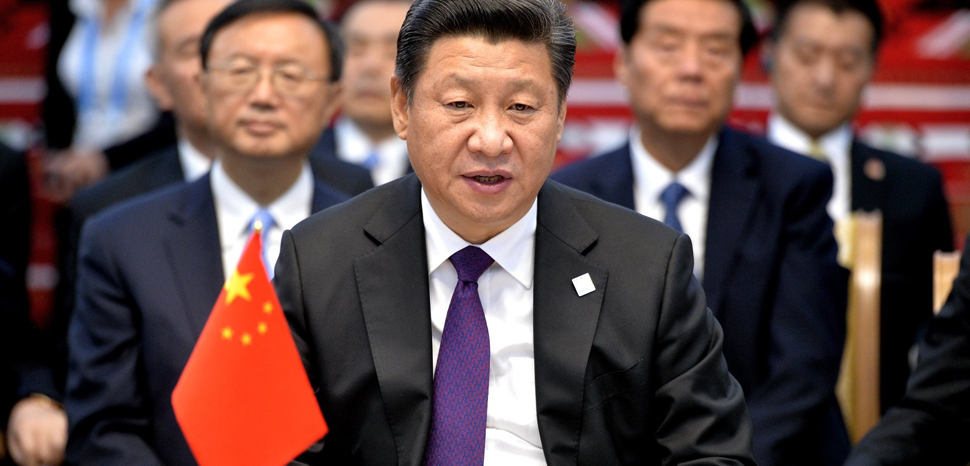US withdrawal from Afghanistan has engendered a new reality in the region. Their hasty departure, followed by the Taliban’s rapid takeover of Afghanistan, presents both opportunities and challenges to Eurasia’s regional powers, especially for China.
Representatives of the Afghan Taliban and China met in Tianjin in July. The Afghan Taliban stated that it will never allow any force to use Afghan territory to engage in acts detrimental to China. Besides, it hopes that China will become more involved in Afghanistan’s peace and reconciliation process and play a larger role in its future reconstruction and economic development. After the takeover of Kabul, Yue Xiaoyong, the special envoy for Afghan affairs in the Chinese Foreign Ministry, said that China respects Afghan sovereignty and territorial integrity and independence, and China respects the Afghan people’s will and choice. Despite different arguments about the future position of China in Afghanistan, generally there are two narratives concerning China’s future position in Afghanistan: one of opportunities and one of challenges.
First narrative: opportunity for China?
Some critics of President Biden’s decision to pull out from Afghanistan claim that this will lead to an increase in both the economic and political influence of China over the country. Moreover, they argue that the withdrawal of US forces creates a vacuum in Afghanistan, and China will have a chance to replace the US and extract resources from the country to improve its regional position in both Central and South Asia.
Firstly, the new situation in Afghanistan creates new opportunities for Chinese companies, especially in terms of investments in rare earth metals. Rare earth metals in Afghanistan are estimated to be between $1 trillion and $3 trillion in 2020. China provides more than 85 percent of the world’s rare earth metals, accounting for two-thirds of the global supply. Investing in Afghanistan’s rare earth metals may increase China’s market share and its leverage capability vis-a-vis Western powers and Japan.
Secondly, possible stability in the country may increase the attractiveness of Afghanistan as a transit country for China’s Belt and Road Initiative (BRI). In September 2019, the foreign ministers of China, Pakistan, and Afghanistan agreed to push the extension of the CPEC corridor because greater stability in the country may prompt the extension of the corridor through Afghanistan. Integrating Afghanistan into Belt and Road also improves China’s leverage with India because it has a greater chance of encircling India economically through surrounding trade partners.
Thirdly, integrating Afghanistan into Belt and Road would increase connectivity between South and Central Asia, and could result in the rise of China’s economic influence in terms of trade, investments, and loans. Furthermore, new railway or highway routes throughout Afghanistan would help to diversify China’s export and import routes and strengthen land-based connectivity between the EU and China. These kinds of investments and projects related to Afghanistan’s integration into BRI would increase the dependency of the Afghan Taliban on China and prevent it from supporting radical groups inside China or Central Asia.
Fourthly, the new situation could prompt a new division of labor between China and Russia, as in the case of Central Asia, which could lead to further securitization as both countries would want to prevent terrorism, strengthen their stability in Central Asia, and focus more on their nearby geographies, such as East Asia for China and Eastern Europe for Russia.
Finally, stable Afghanistan may play an important role for the China-led Shanghai Cooperation Organization (SCO). Since 2012, Afghanistan has been only an observer in the SCO. If the Taliban controls all state territories, it could apply for full membership again. Afghanistan’s membership to the SCO would further enhance regional authoritarian rules and norms, reduce China’s vulnerability in the western and southwestern side of China, and extend its pro-China rent-seeking elite patronage into Central Asia.
Second narrative: new challenges for China?
At the same time, the situation in Afghanistan is not as rosy for China as some experts make it seem. The return of the Taliban creates more challenges than opportunities for China because of the unstable condition of the state. Firstly, despite the Taliban’s declaration that the war is over, there is no guarantee that other ethnic or religious groups, especially radical Islamist groups, will not resist the Taliban. In addition, there is great uncertainty as to whether the Taliban will stabilize the country or encourage an endless civil war in Afghanistan. For example, the vice president in the ousted government, Amrullah Saleh, claimed in a post on Twitter to have the title of the president under Afghanistan’s US-brokered 2004 Constitution, and he did not recognize the Taliban as a legitimate government. Furthermore, Ahmad Massoud, the son of the mujahedeen leader Ahmad Shah Massoud, also did not recognize the Taliban as a legitimate government and he said that has not any intention to leave the Panjshir Valley.
Secondly, the Taliban is not a unified but a fractured organization; that is why there is no guarantee that different branches of the organization won’t support terrorism and separatism inside of China or Central Asia. For example, the Director of the Research Department of the National Institute of Strategic Studies at Tsinghua University told the Global Times that the “fact is, there are still supporters of the East Turkestan Movement within the Taliban.” Moreover, while the Afghan Taliban does not support other groups, its victory in Afghanistan could be a source of inspiration for radical groups and contribute to the rise of radicalism in Central Asia.
These groups, such as the Islamic Movement of Uzbekistan, Hizb-u-Tahrir (HUT) and the Pakistan Taliban, may also increase pressure on the Central Asian and Pakistan governments and may destabilize regional states and threaten Chinese investments. Furthermore, a fractured Afghanistan creates not only problems for the integration of the state to the BRI but also threatens other transport corridors in Central Asia, such as the Middle Corridor and the New Eurasia Land Bridge, due to terrorism risks. In addition, refugees from Afghanistan to neighboring countries, such as Uzbekistan and Tajikistan, may increase pressure on Central Asian economies. These factors represent a destabilizing force in the region, threatening pro-Chinese governments in Central Asia.
Thirdly, the existence of resistance groups will discourage Chinese companies from investing in Afghanistan. Since the 2000s, there have been various projects related to energy, infrastructure, and the natural resources that Chinese companies initiated. For example, a contract to develop and exploit a copper mine in Mes Aynak, and in 2011, Chinese energy giant China National Petroleum Corp. winning a tender for an oil field in the Amu Darya in the north of the country. However, both of the projects unraveled due to the insecure conditions and clan and tribal politics in the country. Even now, the absence of central government and inadequate infrastructure makes it hard to transport goods. The lack of proper legal frameworks, lack of institutional capacity, and corruption all make it very difficult to invest in any industry, especially the mining sector. There is little chance these issues will be resolved quickly, dampening investment efforts by China in Afghanistan.
Fourthly, with regard to the integration of Afghanistan into Belt and Road, this is also potentially very difficult. There are three main border crossings between Afghanistan and China: Chalachigu Valley, Wakhjir Pass, and North Wakhjir Pass. All three are unsuitable for infrastructure development due to seasonal challenges and extreme territory conditions. In the absence of direct connection between China and Afghanistan, there are three indirect routes that connect the two countries. The first is China-Tajikistan-Afghanistan route. But this route not viable for intensive trade and infrastructure development because of the landscape problems and the instability of the Afghanistan-Tajikistan border crossing. Second is the China-Kyrgyzstan-Tajikistan-Afghanistan railway route. However, this option is not feasible for medium term because of the weak railway network. Finally, the best route is China-Afghanistan-Pakistan route which would hypothetically link the country to the CPEC corridor. As other routes, this route also requires a high volume of investment and stability in Afghanistan. Furthermore, at the moment, such an add-on is not a priority for the CPEC corridor. The inherent challenges in all the possible high-volume trade linkages between China and Afghanistan illustrate that the potential for rapid integration of Afghanistan into the BRI is an exaggeration.
Finally, increased vulnerability along the western border of China may force China to increase its presence in terms of security in Central Asian countries, especially in Tajikistan and Pakistan. This factor also triggers regional competition between China and India or Russia, which may lead to increased strategic ambiguity in the region. Besides, the fractured situation in Afghanistan may distract China’s strategic focus from East Asia and the South China Sea to Central and South Asia partially, which could increase China’s vulnerability vis-à-vis the United States.
Conclusion
The recent success of the Afghan Taliban raises concerns and opportunities for China. At the moment, instability in Afghanistan, resistance groups, and the absence of centralized government all make it difficult for China to gain a foothold in Afghanistan, and integrating the state to BRI seems unrealistic over the short-term. Rather than calculating any newfound influence in Afghanistan, China first needs to protect its own and partners’ boundaries from extremism and terrorism. But in the medium- to long-term, by way of Beijing’s strategic partnership with Pakistan, China has the potential to play a more important role as a regional public goods provider and mediator.




